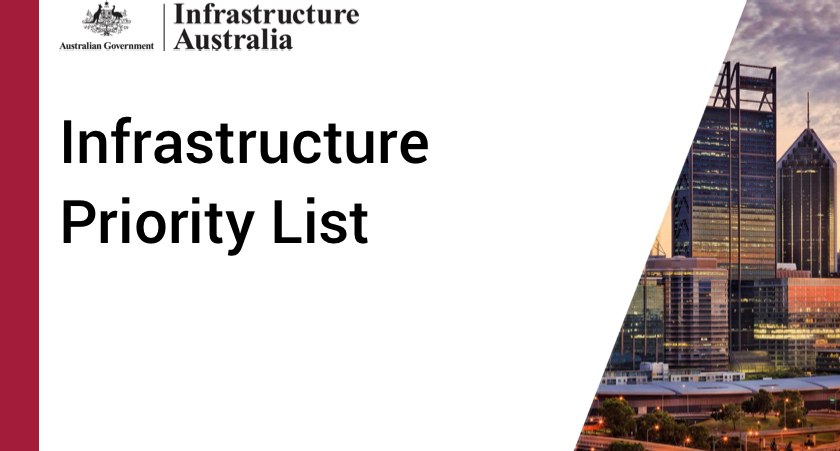The new Infrastructure Australia 2018 Priority List was released this month with $55 billion worth of ‘nation shaping’ projects.
Of these, 6 are listed as High Priority Projects, 6 are Priority Projects, 24 High Priority Initiatives, and 60 Priority Initiatives. 4 were for projects that will affect regional capital cities.
In launching the list at Parliament House, Infrastructure Australia Chair Julieanne Alroe made the following statements in support of the list:
- In the next 30 years, Australia will be home to 36 million people. This rate of growth is equivalent to adding a new city, roughly the size of Canberra, each year for the next 30 years.
- We know the vast majority of this growth, about 75%, will be centred in our largest cities – Sydney, Melbourne, Brisbane and Perth.
- This is a challenge that we [Australia] can’t afford to manage passively. We must invest our infrastructure dollars wisely to maintain our existing infrastructure and we must build new infrastructure when and where it is most needed.
As Chair of Regional Capitals Australia, I agree that there is no doubt we are heading for a big Australia and that we must act to manage this growth. There is no place for passive strategy, policy or investments.
On the matter of stating that 75% of growth will occur in our big cities, I would caution that is a mindset statement – not a fact. It is a prediction of a future that is clearly based on the passive policy settings of today, which is something that Regional Capitals Australia (RCA) is advocating strongly to change.
In a welcome shift in language Ms Alore’s speech also stated the “2018 Priority List also recognises that efficient, liveable and productive regional hubs are national economic assets and should be a key priority of every level of government. There is a continued need to focus future infrastructure investment on supporting access to and growth in our regions and aim to get the most return nation-wide.” Pointing to a third of projects in the list as IA’s contribution to this objective.
It is great to see the needs of RCA member cities being recognised in the list, but much more needs to be done to ensure that our regional cities are planned and developed to assist in accommodating the big Australia of tomorrow.
Two key issues we would like to immediately challenge are around the current assessment process, which, I believe is heavily weighted towards travel-time savings in a bid to solve congestion issues in the big cities.
Additionally only projects valued at more than $100 million can be submitted for assessment, meaning many of the affordable needs of both big and small regional cities are ignored.
Planning for some regional cities is slowly taking place in federal policy through the Smart Cities Plan and City Deals initiative, but much more needs to be done if we are going to get the balance right.
Regional Capitals Australia will continue to push to shift the continued big city bias to a view that will use infrastructure budgets wisely to increase the productivity and liveability of all cities. This is an objective I think we can all agree is big thinking that will prepare regional Australia for a big future.
—
Contact
Rachael Sweeney, Regional Capitals Australia Secretariat
P: 03 9666 3368
M: 0422 067 858
E: Secretariat@regionalcapitalsaustralia.org
About Regional Capitals Australia
Regional Capitals Australia (RCA) is a national alliance of local government councils across the nation representing Australia’s regional cities. RCA’s mission is to provide a recognised platform to champion the strategic importance and sustainable development of regional capitals around the nation. To learn more about our work visit http://regionalcapitalsaustralia.org.
Available for Interview
Mayor Shane Van Styn – Chair, Regional Capitals Australia
